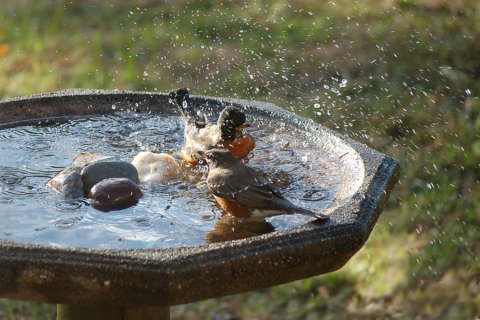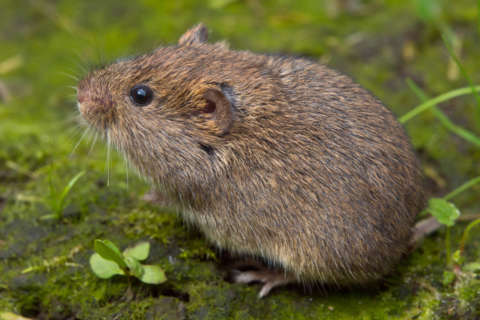I know it’s still unseasonably warm out there, but the hours of daylight are getting rapidly shorter and cold weather often arrives unexpectedly. So, here are a few cool weather warnings:
- Start getting your houseplants ready to come inside by hosing them down with laser-sharp steams of water to blast away hitchhiking bugs.
- Pull all new flowers off your tomatoes, peppers, eggplants, pumpkins and the like; there’s just not enough time for those flowers to become ripe fruits.
- Wear tick-proof socks and pants treated with permethrin and/or check yourself carefully after working outdoors. Ticks are especially active at this time of year and, at least to this reporter, especially this year. I forgot to wear my tick-proof treated clothes last Wednesday and had to pull one of the little nasties off my ankle that night! Insect Shield sells clothing that’s professionally treated to repel ticks. You can also treat your own clothes with permethrin clothing sprays; available wherever hunting and fishing gear is sold.
Sedums savaged by sapsuckers!
Bobbie in Culpeper writes: “For the second year in a row, I’m having problems with aphids and sooty mold on three of my sedums. They’re in pots, grouped together on my porch. None of my other plants or other sedums — some potted and some planted in the ground — are affected. How do I start to get rid of this problem?”
With a pressurized sprayer or a garden hose that has a nozzle with adjustable settings, Bobbie. That “sooty mold” is actually “honeydew,” a flowery way of saying aphid poop (or “frass,” if you wish to be entomologically polite). Very sharp streams of water will blast away the aphids and their excrement. In fact, studies repeatedly show that sharp streams of water are better at getting rid of aphids than chemical pesticides.
Why do some sedums suffer and not some others?
Bobbie in Culpeper has aphids pooping on three of the potted sedums, but not the other sedums, some of which are potted and some planted in the ground.
My first guess would be that the three affected containers were victims of chemical fertilizer — a major cause of aphid infestations. But Bobbie swears she hasn’t fed her plants.
Next up in “the probable cause file” would be lack of sun and/or poor drainage.
Sedums are notoriously sun hungry. That’s why they’re the plant of choice for green-roof installations, where it’s full sun, all the time. If the affected plants are in a spot where they’re getting less sun than their brethren, aphid arrivals would be expected.
Same with drainage: Containers need lots of drainage holes in the bottom and should not be resting on a spot that could block that drainage. Containers should also only be filled with a little bit of compost for nutrition and what’s called “a soil free mix” (aka “potting soil” or “seed starting mix”) for good drainage.
Garden soil is just too thick and heavy. As am I.
Don’t cut any plants back now
Bobbie in Culpeper has aphids on some of her potted sedums. She writes: “I’m thinking of totally cutting back each plant, dumping the soil they’re growing in, washing out the pots and starting over. I usually cut them back after we have a couple freezes anyway.”
Bad ideas all around, Bobbie.
Cutting any plant back at this time of year will cause lush new growth that’s prone to severe winter injury — especially if it’s in a pot that’s going to stay outdoors. Same with that midwinter scalping: Plants need their aboveground growth left intact to protect their roots in the event of a cold winter without insulating snow cover.
Instead of hacking away, spray the aphids off with sharp streams of water now and again in a week. Then dig some holes and drop the potted plants into the ground, where freezing cold will affect them less. Or bring the containers inside for the winter. There are 500 different types of sedum and some of them aren’t very frost hardy.
Corn gluten or grass seed — never both!
David in Howard County writes: “The end of summer is conducive to two different treatments for your lawn, assuming they are needed: over-seeding and application of corn gluten meal. Should these two treatments be applied at the same time? Or in alternate autumns?”
It has to be “alternate,” David. Corn gluten meal is an excellent fertilizer; its 9 to 10 percent slow-release nitrogen content makes it an ideal lawn food. Ah, but corn gluten meal originally became popular because — when used in high enough amounts — it inhibits the germination of seeds. That means dormant weed seeds lurking in your lawn, but it also means the seeds of wanted plants like grass.
So, if you want to over-seed some bare spots, forget the CGM until spring. Instead, spread some compost over the area and sow the new seed before the soil gets too cool for good germination.
Mike McGrath was Editor-in-Chief of ORGANIC GARDENING magazine from 1990 through 1997. He has been the host of the nationally syndicated Public Radio show “You Bet Your Garden” since 1998 and Garden Editor for WTOP since 1999. Send him your garden or pest control questions at MikeMcG@PTD.net.







